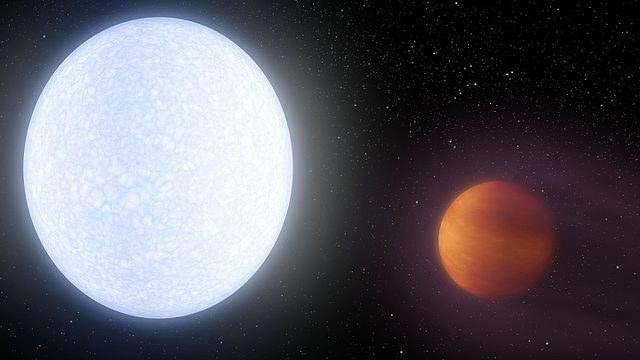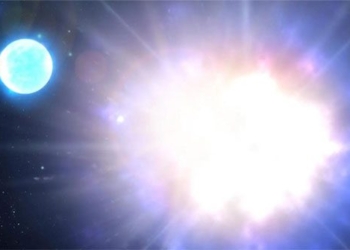Scientists have discovered the element terbium in the atmosphere of KELT-9b, one of the hottest exoplanets recorded to date.
Illustration of the exoplanet KELT-9b orbiting its host star KELT-9. (Video: NASA)
KELT-9b has an average temperature of 4,000 degrees Celsius and orbits the host star KELT-9, located approximately 670 light-years from Earth. This exoplanet has been an intriguing subject for astronomers since its discovery in 2016.
In a recent study published in the journal Astronomy and Astrophysics, scientists have for the first time detected the rare earth metal terbium in the atmosphere of KELT-9b.
“We have developed a new method that allows us to gather more detailed information. Using this method, we discovered seven elements, including terbium, a rare substance that had never been found in the atmosphere of any exoplanet,” said Nicholas Borsato, an astrophysics PhD student at Lund University and a member of the research team.

Rare earth metal terbium found in the atmosphere of KELT-9b.
Swedish chemist Carl Gustaf Mosander discovered terbium at the Ytterby mine in the Stockholm archipelago in 1843. Terbium is quite rare, with 99% of the world’s terbium production taking place at the Bayan Obo mining area in Inner Mongolia.
Typically, exoplanets are detected by measuring the brightness of stars. When an exoplanet transits in front of its host star, the brightness of that star decreases. Thanks to the new method developed by the research team, signals in the atmosphere of KELT-9b can be filtered, opening up the possibility of further understanding the atmospheres of other planets.
“Gaining more insight into heavier elements helps us determine the age of exoplanets and how they form. The discovery of heavy elements in the atmosphere of a super-hot exoplanet is a significant advancement in our quest to understand planetary atmospheres. The more we understand these planets, the greater our chances of finding a ‘Earth 2.0’ in the future,” Borsato added.





















































